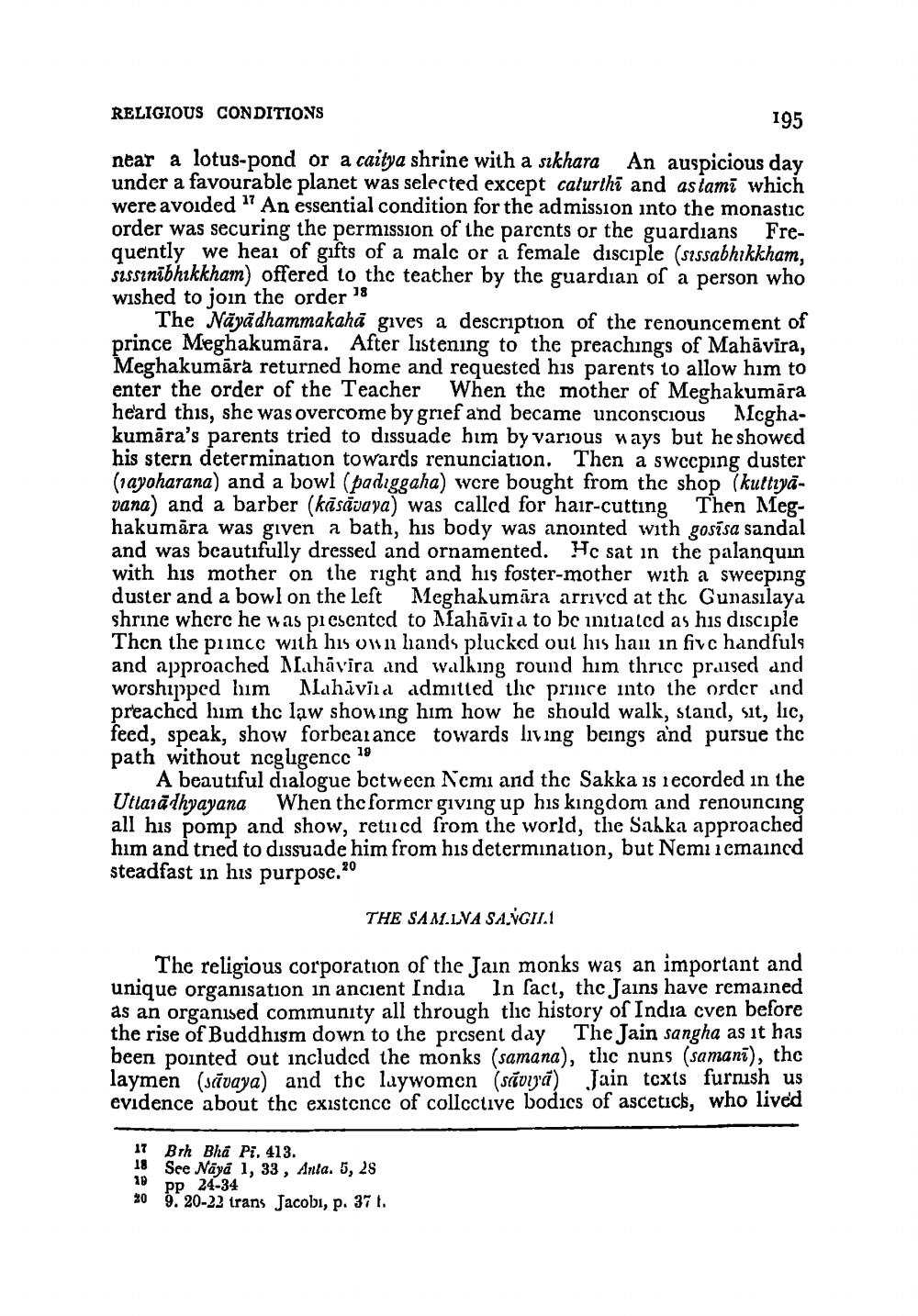________________
RELIGIOUS CONDITIONS
195
near a lotus-pond or a caitya shrine with a sikhara An auspicious day under a favourable planet was selected except caturthi and astamī which were avoided 17 An essential condition for the admission into the monastic order was securing the permission of the parcnts or the guardians Frequently we hear of gifts of a malc or a female disciple (sessabhikkham, Sissinībhikkham) offered to the teacher by the guardian of a person who wished to join the order 18
The Nāyādhammakaha gives a description of the renouncement of prince Meghakumāra. After listening to the preachings of Mahāvira, Meghakumāra returned home and requested his parents to allow him to enter the order of the Teacher When the mother of Meghakumara heard this, she was overcome by grief and became unconscious Mcghakumara's parents tried to dissuade him by various ways but he showed his stern determination towards renunciation. Then a swccping duster (nayoharana) and a bowl (padiggaha) were bought from the shop (kuttiyavana) and a barber (kāsāvaya) was called for hair-cutting Then Meghakumāra was given a bath, his body was anointed with gosisa sandal and was beautifully dressed and ornamented. He sat in the palanquin with his mother on the right and his foster-mother with a sweeping duster and a bowl on the left Meghakumāra arrived at thc Gunasılaya shrine where he was picscnted to Mahāvila to be initialed as his disciple Then the prince with his own hands plucked out his hai in fivc handfuls and approached Mahavira and walking round him thrice praised and worshipped him ahāvīld admitted the price into the order and preached him thc law showing him how he should walk, stand, sit, lic, feed, speak, show forbearance towards living beings and pursue the path without ncgligencc 19
A beautiful dialogue between Ncmi and the Sakka is iecorded in the Utlaradhyayana When the former giving up his kingdom and renouncing all his pomp and show, retucd from the world, the Sahka approached him and tried to dissuade him from his determination, but Nemi icmained steadfast in his purpose.*
THE SAM.LVA SAVGIT.1
The religious corporation of the Jain monks was an important and unique organisation in ancient India In fact, the Jains have remained as an organised community all through tlic history of India cven before the rise of Buddhism down to the present day The Jain sangha as it has been pointed out included the monks (samana), the nuns (samanī), the laymen (stivaya) and the laywomen (scivia) Jain tcxts furnish us evidence about thc existence of collcctive bodics of ascetics, who lived
17 Brh Bhã Pi. 413. 18 See Nāya 1, 33, Anta. 5, 28 10 pp 24-34 20 9. 20-22 trans Jacobi, p. 371.




